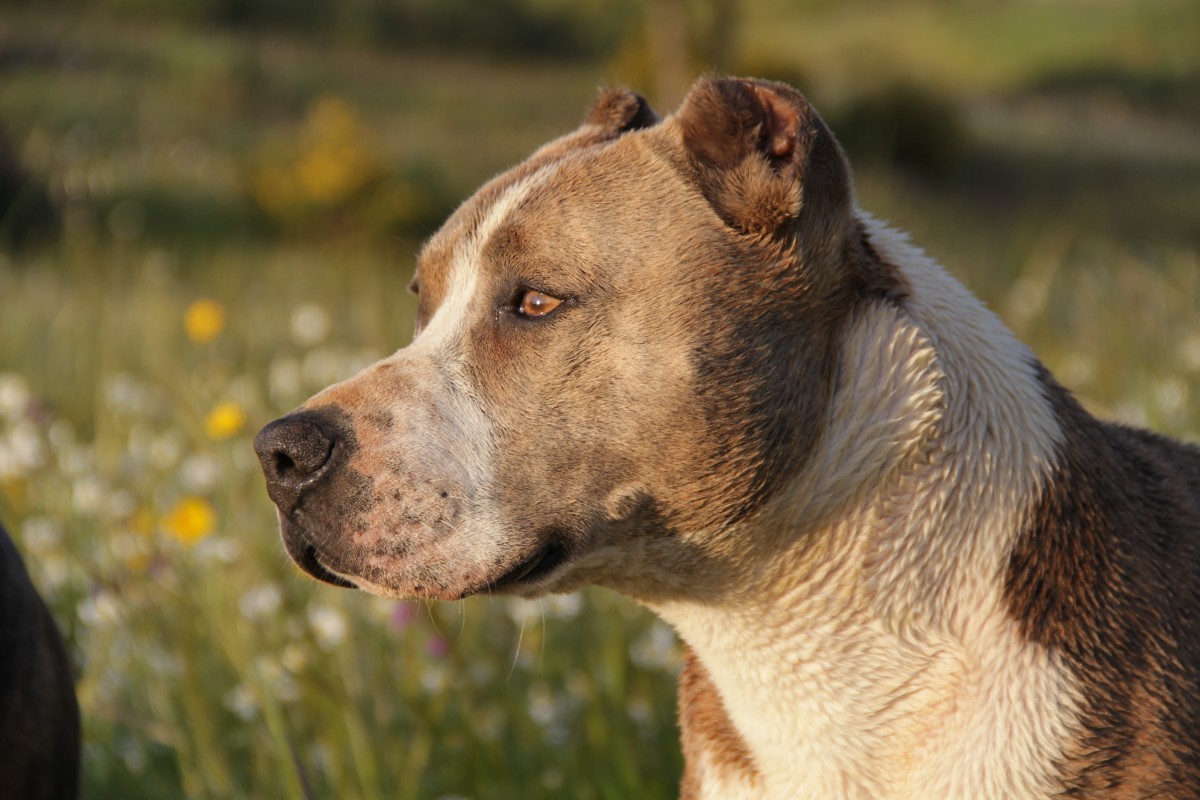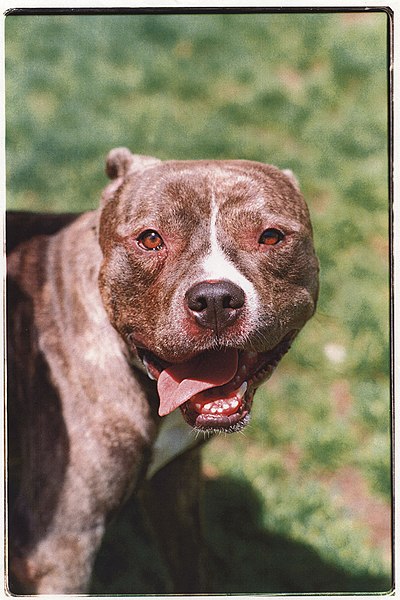Ear Cropping Gone Wrong: Fact, Myth and Problem

If you’ve ever seen an ear-cropped dog, you’d know that there’s no way to get the remaining four on the ear silky and as attractive as possible. And this fact isn’t lost upon many people; in fashion magazines and animal rescue shelters alike, dogs are regularly posted with their ears cropped.
It’s not uncommon for dogs to have their ears cropped. Unfortunately, it’s a common practice in the dog world, and while many owners may feel that ear cropping is necessary, it’s not.
Table of Contents
What is ear cropping?
Ear cropping is a practice where the ears of puppies are cropped off. The idea is to reduce the risk of ear infections and other problems with the ears.
The procedure usually involves cutting through the cartilage at the top of the ear using a scalpel. Some techniques try to avoid the cartilage so as not to damage it, but if you do decide on something like this, make sure that your veterinarian is the one performing it.
As for why dogs get cropped? It’s just another common practice in veterinary medicine that can be explained and justified by looking at some of the benefits of cropping ears. Ear cropping will reduce ear ich, ear infections and scratching because dogs can’t reach the ears to scratch them.
In addition, it may reduce the amount of stress caused by an immobile or painful ear in a dog’s life. Ear ich is typically treated with leftover antibiotics if you touch my nose ring. If your dog doesn’t want to remove his boots when you call him for walkies, he most likely needs some help here.
Ear Cropping Gone Wrong: Fact vs Fiction
This is a true story of how my father and I got caught up in the ear cropping debate. It is also an example of why many people are against this practice.
Like many other farmers, my dad took his cattle for auction at the same time every year. But unfortunately, the would-be buyers were mostly from overseas and often had no idea what to do with their animals when they arrived, especially in countries where livestock is essential (e.g., some parts of Nigeria); this was a massive problem because ordinarily, good quality beef is not cheap – prices reflect that in terms of cow weight and slaughter age (the latter being how fresh the meat is, but this isn’t relevant here – we’re talking about value).
The upshot of all this was that many of our cattle were taken to Australia or New Zealand the latter turned out to be the most common direction just before their slaughter date. I think around 50 per cent may have gone in one year. In either case, it’s clear why ear cropping has become such an essential part of sheep management in the Middle East. No one liked ending up with expensive but otherwise useless ears, and no problem marketing a prime cut of meat – ear cropping was here to stay because it worked!
There are other reasons for ear cropping: The first is breeding success. When you want reasonable lambing rates (as we do), your ewes need to have effectively flawless ears so that at least some babies will survive into adulthood given their fleece yesterday, I saw a very high-quality product pictured in one of the books on woolshed-living – it was described as late lambing success, which means that because the ewes have been bred to be polyestrous, they will place their lambs well enough by themselves.

The myth in Ear cropping
The AVMA has stated that the practice of ear cropping does not prevent ear infections. However, there is no data to support this statement.
In addition, some veterinarians may suggest a complete change in diet for certain breeds as part of any general management plan, which may involve ear cropping. However, this can cause more damage because the ewes have had to undergo an acute dietary change like grain withholding – malnutrition is a possible outcome, depending on individual breeds and reasons for this instruction.
Here are some of the questions I would ask: Is there any research backing or contradicting these statements? If you do confirm, they’re backed by science.
Read Also: Can Dogs Eat Salsa?
Some people may believe that ear cropping is a standard of the breed.
Indeed, many dog breeds were once cropped, but this does not mean that it is an inherent trait. Cropping ears was and still is a product of human interference with genetics. It is more accurate to say that crop ears are common among certain groups:
Those rooting for the breed may suggest other reasons for an ear cutting sign, such as concern over a particular or pure type of wool, etc. The evidence shows no correlation between early lambing date and cropping – again, totally irrelevant since it does not affect their production.
Ear cropping is just like getting ears pierced. It’s a cosmetic procedure that alters the dog’s appearance and identity but doesn’t make him more functional or healthy. Ear cropping doesn’t change how your dog hears or see things; it merely creates a visual cue that some people find appealing, or rather an origin of sorts to your dog’s ancestry – it can make the image “pure”, which isn’t necessarily so. Here are some points about ear cropping:
There is no difference between neutered and unneutered dogs in terms of hearing – only female dogs have vaginas! All male Breeds have been subjected to this procedure before being allowed into
People often say that ear cropping helps dogs hear better. This is not true. Ear cropping does not improve hearing, but it may make the dog’s ears stand up more straight. However, this would be a minor benefit and hardly worth the risk of cropping an ear on the dog. Besides, a bark collar could be made to do this job for you at virtually no expense.
The ears are part of the nose. No matter which way up your dog’s ears are (cropped or uncropped), they always have been located in precisely that area. Dogs with cropped ears sometimes see things differently below than dogs without them, but most breeds will look the same when viewed from above. It is also worth noting that elderly dogs, as we age and infrequently use our eyesight to look around more, are less sighted than younger ones – especially visually in those areas of
Dogs can feel pain in their ears, but it seems unlikely they would be sensitive enough to register all the noises inside their eardrum. Any surface directly behind your pet’s ear canal pierces his skin would undoubtedly hurt him. The dog is well accustomed to this sensation and the fact it hurts his ears when he acts normal in
Experts know quite a bit about ear cropping both on dogs AND humans. There is much research data available at some websites that are explicitly trying to debunk what has been for years claimed as ‘trade secrets or even lies.
Many people believe that ear cropping is painful. It is not. The procedure is relatively quick and painless. Some may even consider it to be a form of cosmetic surgery.
Ear cropping Problem
There are several problems with ear cropping, as I mentioned above. The main one is that it can lead to other health problems. Ear mites and disease are the most severe long-term effects of ewes’ ears being cropped before they are mature enough for them to handle changes in temperature or nursing periods (the latter you may have noticed if you own a sheep but only recently started noticing when your favourite lamb was well on his way.
Ear cropping Aftercare
Following the procedure, it’s important to keep Fido comfortable. For example, if he’s on a high blood pressure medication, you should take him off it for at least 24 hours. Also, any surgery should be followed with a round of antibiotics.
If your dog is outdoors inside an animal, you should think about placing him in a crate after surgery to help prevent stress and staples from irritating his nasal passages. Your pet may be anxious for several days, so make sure Fido rests comfortably before giving him the all-clear (though veterinarians say dogs don’t need much recovery time).
Preparing for ear cropping
Ear cropping is a reasonably straightforward procedure. However, it would help if you prepared for it by having your vet check out Fido’s ears. If he has any problems with his ears or the area around them, he may not be able to handle them. If he has bilaterally shortened ears (perfectly normal), you should only remove his ear that’s affected to get the desired shape; otherwise, it may lead to complications later on down the road. To prevent this from happening or if your dog is already showing some signs of discomfort, wait until at least seven days after surgery and have an answer for Fido before taking him home again unless quick action can be accepted.
Read Also: Fact Check: Can Dogs Eat Boogers?
Some dogs may also need to be conditioned after surgery by getting them used to the feel of their ear removed. This can include applying ointment over the ear and telling your dog what it feels like (circles should appear on its ears), then allowing him some time as well; although not too much, they will only want more when they are feeling great! If a large amount of hair grows in this area, we don’t recommend that you try removing it yourself. Just let your veterinary staff know, as they can suggest how to remove the hair if need be.
Dogs will also require cleaning after surgery, so always allow plenty of time for your pet to recover and not expect him to come back the same way; small amounts of staples may exit his surgical site during recovery like when he’s playing, but a veterinarian will go in and remove them so they won’t accidentally stick inside your pet. If you come home with Fido based on his ear shape alone, he may be surprised. But even if that’s the case, keep an eye out for any possible complications so an early visit to our animal hospital office can catch it before anything serious happens; rest assured, we’ll take excellent care of him.
Are Cropping Dogs’ Ears Bad?
Some dog owners believe that ear cropping is a great way to cut down on ear problems. Unfortunately, this can be dangerous and has adverse effects on your dog’s health. For example, cropping dogs’ ears will reduce or even make impossible the existing means of ear cleaning. You can clean your dog’s ears with an ear-cleaning solution. Some pet owners use special boiling water and apple cider vinegar medicated shampoo for their darling pups. However, these items are no longer inexpensive options to try as there is an entire industry offering a professional range of products for healing the ears.

What’s wrong with cropped ears?
There is nothing wrong with cropped ears, as long as they are done correctly. Cropped ears can be a fun and stylish way to express your style, and they can also be protective in some cases. Cropped ears are most commonly seen in children, but they can also be a popular style for adults.
When cropped ears are done correctly, they can help protect the ears from the elements and damage caused by wind or excessive exposure to the sun. They can also help disguise large ears and make the head look more petite. Moreover, cropped ears can add height and a youthful appearance. If you are considering cropped ears, consult with a professional before you undergo any surgery.
Is ear cropping illegal?
In some countries, ear cropping is still practiced by some kennels and breeders. In the UK, it’s illegal to alter or remove any part of a dog’s body without its owner’s consent.
However, this law does not stop owners from scaling their dog’s ears, but it does prevent any kennel or breeder required to have this sort of license from performing the ear cropping on their dogs.
Why shouldn’t dogs have their ears cropped?
Dogs are born with their ears. They don’t need to have them removed or altered in any way.
It’s cruel and unnecessary surgery, often performed by people who don’t understand the importance of ear health for dogs. It can lead to many problems.
That’s why I’m advocating for dogs to be protected someway through law in the future so that no unnecessary ear surgery can ever occur again on any living dog. If a court were to declare it illegal, this would provide support and protection for all (live)canine pets.
You might be surprised to learn that this practice is still happening. In 2013, the Animal Welfare Act (2006) was updated, and ear cropping is now illegal in England and Wales. Despite this, it’s estimated that around 2,000 dogs are ear cropped every year.
So, why did the government feel the need to make it illegal? Well, partly because of an animal welfare petition put in by Peta and a few others who insist that dogs shouldn’t be subjected to this procedure. Refusing to blindfold a puppy on being dropped off for training could cause severe harm, which is something we can’t allow under modern pet standards.
If your vet performs any procedure on your dog, they must have a surgical license that the Kennel Club has approved. And if you’d like more information about this and other essential supplements for dogs, get them in our Pet Supplements Centre.
Don’t crop ears unless necessary, or seek out pet professionals who are comfortable with the process.
Does ear cropping traumatize dogs?
No, ear cropping does not traumatize dogs. However, it is often done to reduce the amount of noise a dog makes, which can be bothersome to some people. Ear cropping is typically performed on puppies between eight and twelve weeks old, and the procedure is painless. The ears are cut just below the ear canal, and the excess skin is removed.




